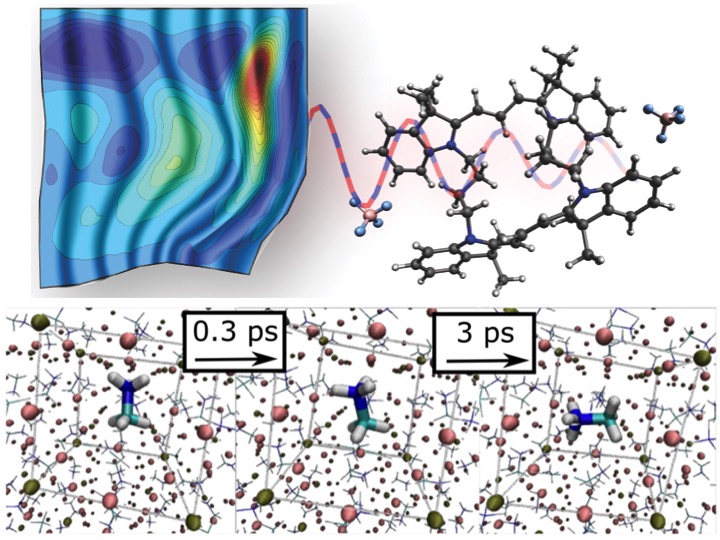Computational Spectroscopy
Unraveling the structure and function of advanced materials
Advanced materials are often made up of multiple identical or similar units forming complex structures enabling them to perform various tasks very efficiently. For example natural and artificial light harvesting systems often have a tubular structure, which promote efficient energy transport through collective motion through multiple units. Likewise proteins evolved to fold up in complex structures allowing them to perform very specific tasks. To determine the structure and understand the function of such materials, we perform calculations using model hamiltonians, electronic structure calculations, molecular dynamics, and stochastic methods. In this way we can account for the complex quantum mechanical nature of the collective excitations that determine the experimental spectra and the underlying function. This is a crucial step in understanding how advanced materials work and what can be done to improve or modify their behaviour. Furthermore, it allows the calculation and interpretation of various (non-)linear spectroscopies, such as, linear absorption, fluorescence, and two-dimensional spectroscopies, that are determined by the structure and function of advanced materials. This is particularly important as the signals in these experimental techniques are notoriously difficult to interpret due to spectral peak overlap and non trivial behaviour of the advanced materials. Liveslides.
Recent Highlights:
1. A question of enormous current interest is the coherence time and length of the excitons in such aggregates. This may be probed by ultrafast multi-pulse laser spectroscopies (such as two-dimensional spectroscopy). We are actively involved in the heated discussion of the interpretation of such experiments (Nat. Chem. 10, 780-786 (2018)).
2. The role of the methylammonium ions in the recently discovered hybrid perovskite solar cells is unknown. We demonstrated that the dynamics of these solid state ions is very fast and can be characterized by two main contributions (J. Phys. Chem. Lett. 6, 3663-3669 (2015)).
3. Exploring the structure and function of proteins is important for the understanding of life and development of drugs. Combining two-dimensional infrared spectroscopy with other methods we found the direct knock-on mechanism to govern the selectivity in K+ ion channels (Nat. Chem. 10, 813-820 (2018)).
We are a member of the Berendsen Center for Multiscale Modeling and Material Design.
We participate in the PhotoCaM doctoral network.
Find software developed in our group on GitHub.

| Last modified: | 26 November 2023 5.08 p.m. |
